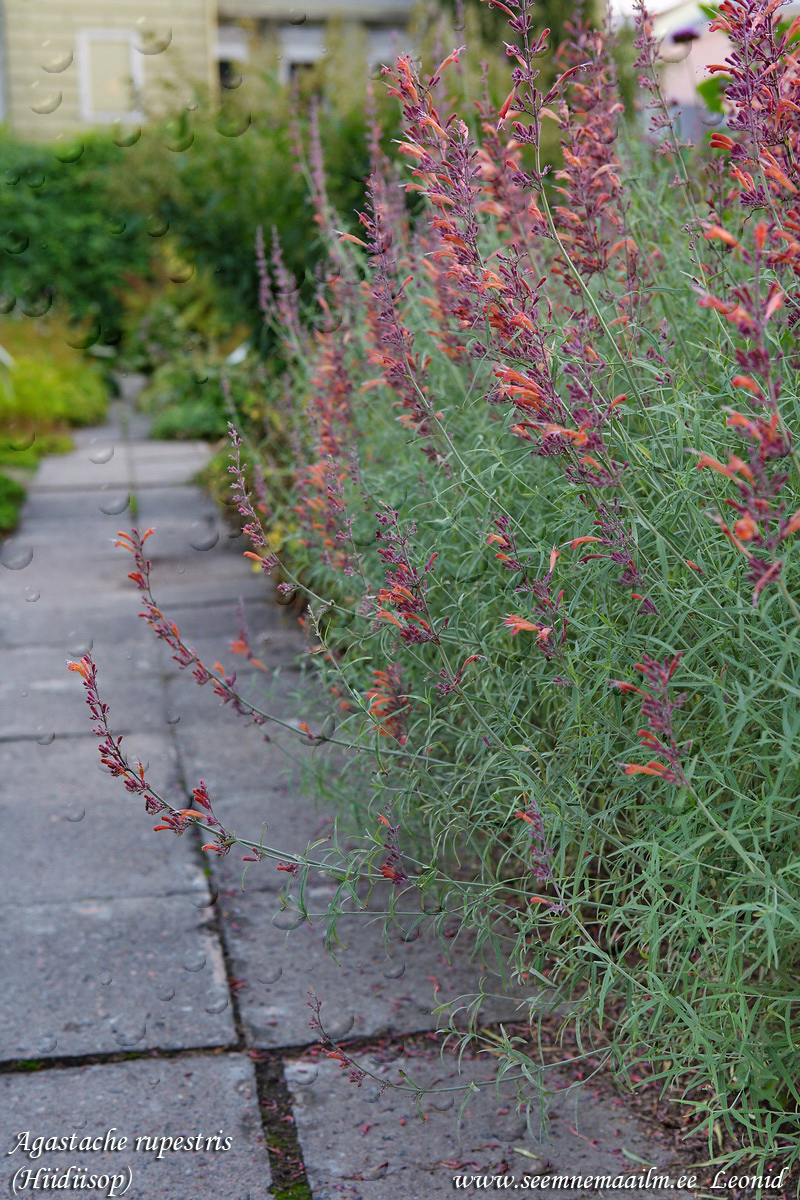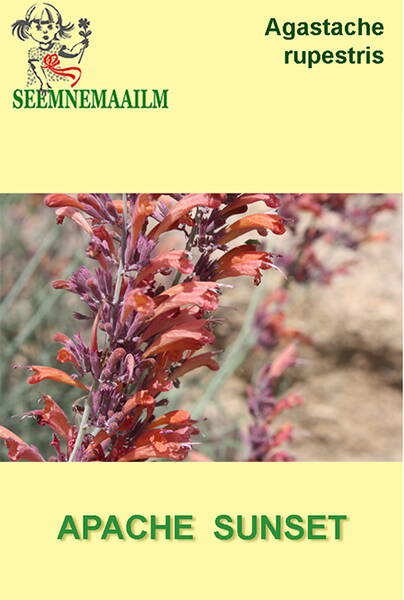Your shopping cart is empty!
Threadleaf giant hyssop "Apache Sunset" (Rock Anise Hyssop)
Agastache rupestris
3.78€
Ex Tax: 3.05€
Ex Tax: 3.05€
Sunset Hyssop "Apache Sunset" - Agastache rupestris.
Subtle, exotic aroma!
It occurs naturally from southeastern New Mexico to south-central Arizona. Upright perennial 45-90 cm tall and 45 cm bush diameter.
The leaves are linear-lanceolate, gray-green, filiform, very decorative and fragrant. Corolla toothed, flower about 4 mm in diameter. One of the most frost-resistant species of the genus.
Winter hardiness zones: 5-9.
Currently, varieties are bred that bloom in the year of sowing. In the middle lane, it is recommended to grow them in an annual crop, since the plant tolerates only a mild winter well. In a perennial culture, drainage and preventive dry shelter for the winter are mandatory.
Location: preferably a well-lit warm, even hot place.
Soil: grows well in poor, well-drained areas. May fall out on heavy, moist soils.
Care: in Estonian conditions, for successful wintering, it is necessary to provide light soils, drainage and preventive dry shelter for the winter. The plant does not tolerate stagnant winter-spring waters. It is important to cut off the aerial part no later than mid-September, leaving 10 cm of stems in order to wake up the root buds, which winter well.
Reproduction: seeds and vegetatively. Varieties, as a rule, propagate only vegetatively. In open ground sown in May. Seeds germinate at +20°C. Seedlings develop slowly and when sown in open ground, plants can bloom only in August-September. In order for young bushes to bloom in July-August, they must be grown from seedlings. Seeds are sown in March-April, placing boxes with soil in a warm room.
Use: in mixborders to create arched color spots, gives an excellent cut, indispensable in fragrant gardens. Lofant is perfect for decorating patios, as it gives them a unique exotic colorate.
1,0 g = 1250 seeds.
Subtle, exotic aroma!
It occurs naturally from southeastern New Mexico to south-central Arizona. Upright perennial 45-90 cm tall and 45 cm bush diameter.
The leaves are linear-lanceolate, gray-green, filiform, very decorative and fragrant. Corolla toothed, flower about 4 mm in diameter. One of the most frost-resistant species of the genus.
Winter hardiness zones: 5-9.
Currently, varieties are bred that bloom in the year of sowing. In the middle lane, it is recommended to grow them in an annual crop, since the plant tolerates only a mild winter well. In a perennial culture, drainage and preventive dry shelter for the winter are mandatory.
Location: preferably a well-lit warm, even hot place.
Soil: grows well in poor, well-drained areas. May fall out on heavy, moist soils.
Care: in Estonian conditions, for successful wintering, it is necessary to provide light soils, drainage and preventive dry shelter for the winter. The plant does not tolerate stagnant winter-spring waters. It is important to cut off the aerial part no later than mid-September, leaving 10 cm of stems in order to wake up the root buds, which winter well.
Reproduction: seeds and vegetatively. Varieties, as a rule, propagate only vegetatively. In open ground sown in May. Seeds germinate at +20°C. Seedlings develop slowly and when sown in open ground, plants can bloom only in August-September. In order for young bushes to bloom in July-August, they must be grown from seedlings. Seeds are sown in March-April, placing boxes with soil in a warm room.
Use: in mixborders to create arched color spots, gives an excellent cut, indispensable in fragrant gardens. Lofant is perfect for decorating patios, as it gives them a unique exotic colorate.
1,0 g = 1250 seeds.

Rock Anise Hyssop, Threadleaf giant hyssop.












